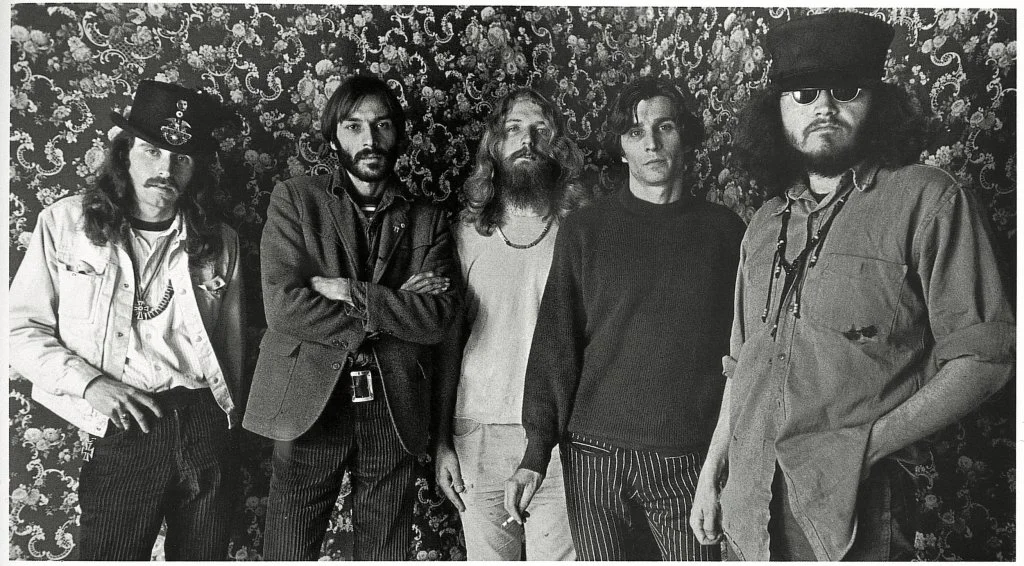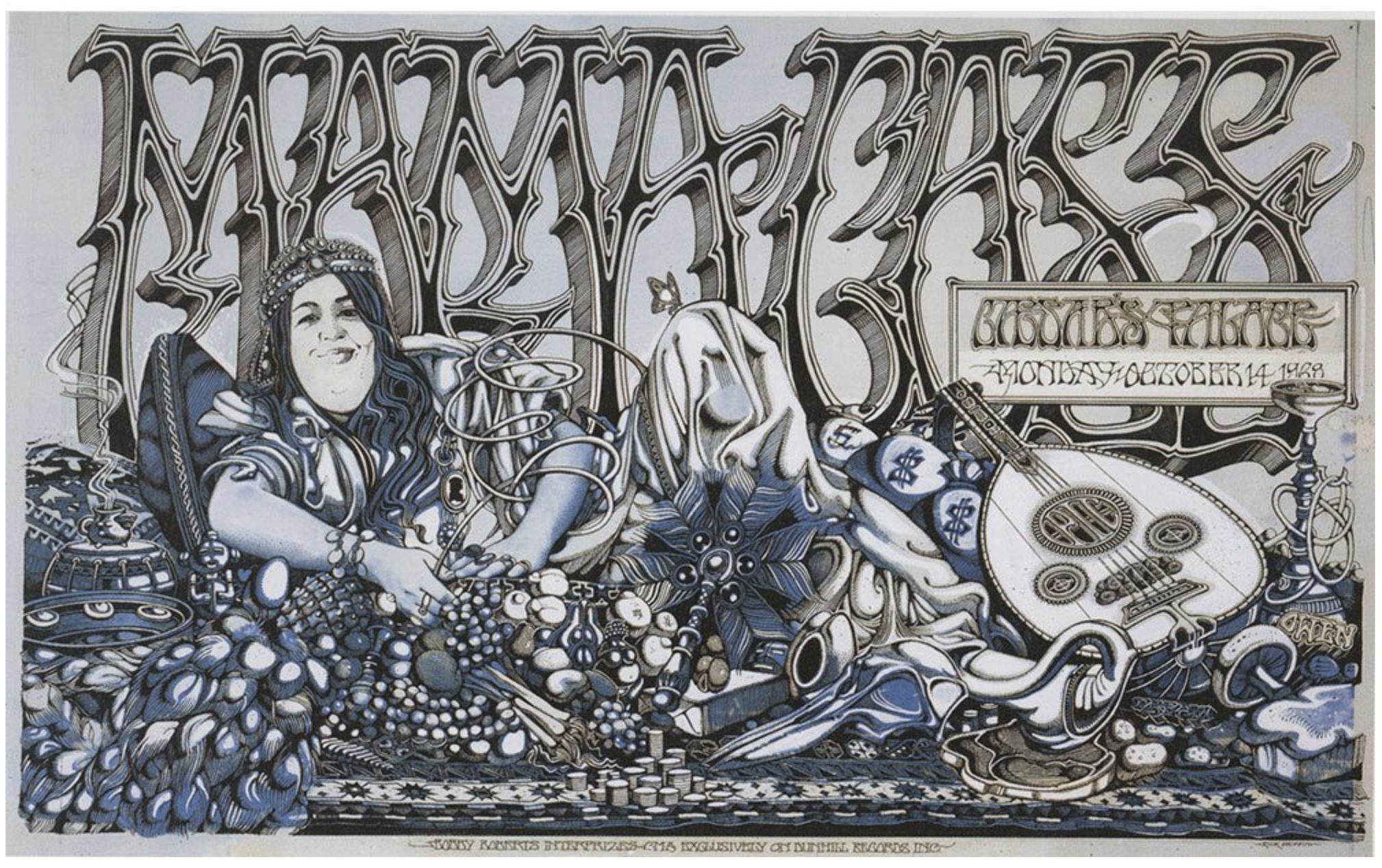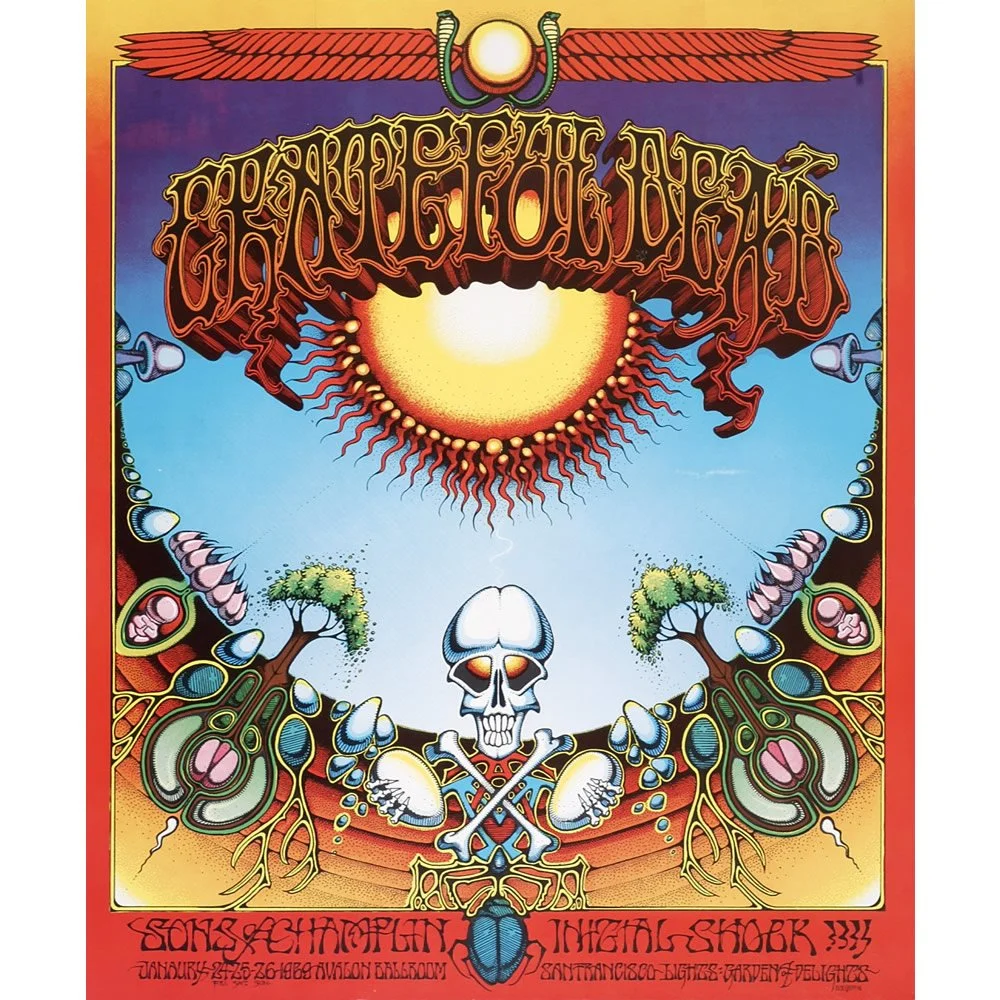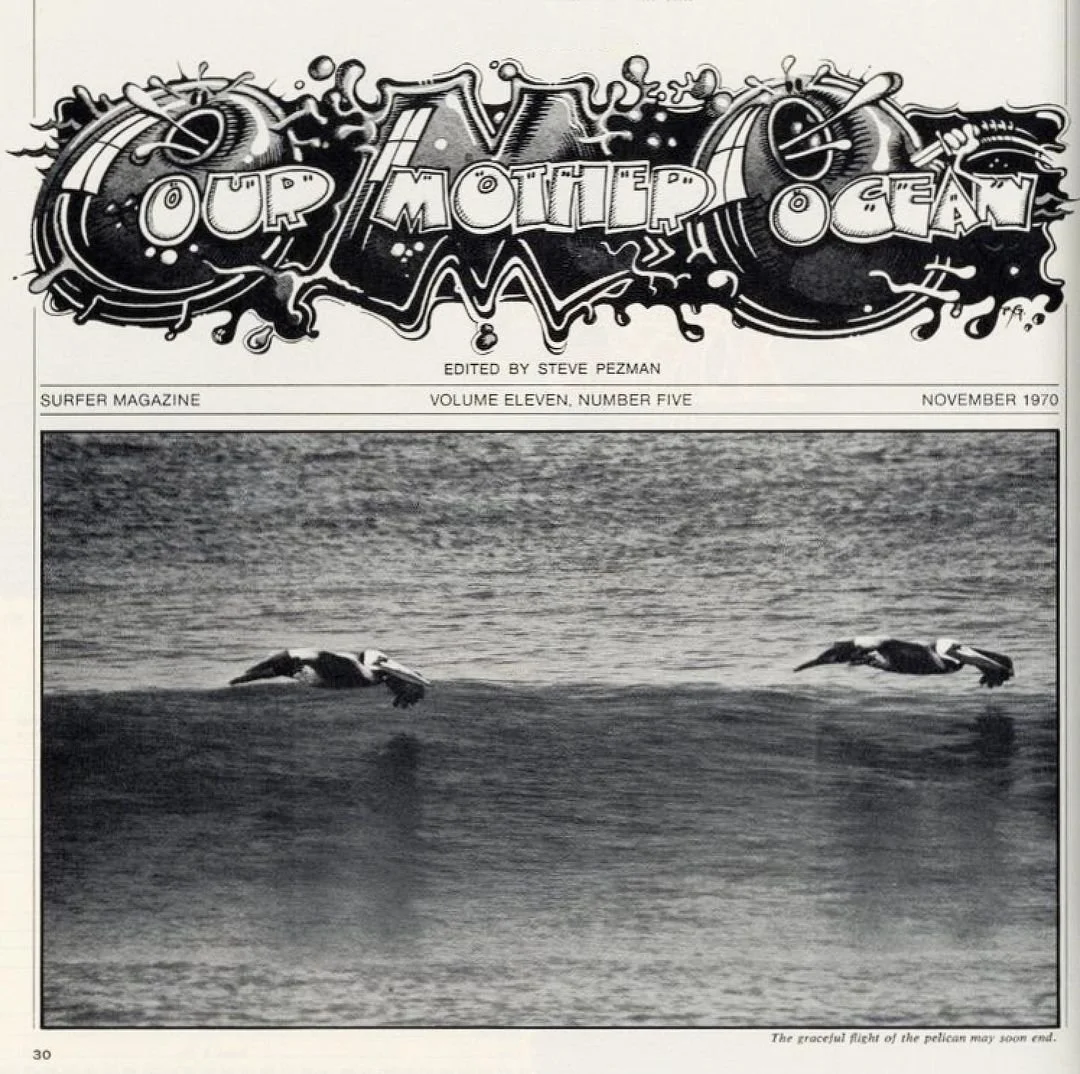Rick Griffin — Tales from the Tube
California is an iconic coastline. The beautiful shape of her land has universal appeal, and this natural grace is enhanced by intoxicating global fame. The warm and undying allure she enjoys is the residue of the culture that laps at her shores. It is the handiwork of those who carves her waves, cruise her streets, and roadtrip north on highways bound for wilder skylines. A glowing beacon of sun, sand, and salubrious ease, Californian culture is more subtle and complex than the general, relaxed demeanor suggests. There are a handful of creative titans who have sculpted this culture, and for those of us who have traced the tendrils of origin, we know their names. Maybe you’ve heard of Rick Griffin, maybe you haven’t, but if you call yourself a Californian, you have tread in his footprints and been buoyed up by the contributions of this legendary 1960’s icon who helped shaped the aesthetic and cultural essence of California’s surf, skate, street and sonic culture.
Rick has an impressive backstory as an illustrator and graphic artist, beginning with him starting his career as a late teenager working at Surfer magazine in its inception. His upbringing in 1950s Los Angeles (first in the valley and later in Palos Verdes) made his influences a perfect blend of everything that it means to be Southern Californian. He would effortlessly manage to find himself on the ground floor of every major Californian cultural scene that later followed, from his young days in James Dean-esque greaser culture, to discovering the budding SoCal surf culture as an early teen, to hitch-hiking hippie culture, and The Grateful Dead, Jimi Hendrix, and beyond. You can look it up, and I would encourage that you do, but my role here is not to deliver a granular historical account — I am here to talk about the distillation of his singular experience into a graphic record, I’m here to talk about California, I’m here to talk about the work.
The “Big Five” San Francisco Poster Artists, 1968 (L to R: Alton Kelley, Victor Moscoso, Rick Griffin, Wes Wilson, Stanley Mouse / Photograph: Bob Seidemann)
Rick Griffin had several eras of art-making, each defined by their own stylistic norms. The one that is most compelling is the work he made from the late 60s to the late 70s, while he lived and created from the epicenter of that era’s California counter-culture. His work in this period is defined by fluid and energetic typography, methodically intentional layouts, and a reverberating symbolism that sought to graphically convey the universal elements of existence. The work was, by appearances, layouts for magazines, concert posters, and other normal graphic fare, but the content conveys an imagination that was stationed primarily at a cosmic scale. Having honed his creative technical ability, in this period there is a spiritual, psychedelic quest to share truth emerged with a frantic urgency. He regularly referred to a character named OMO (Our Mother Ocean), and literally drew parallels between the ocean, the inner realms of the human body where life is perpetuated, thought/consciousness, light, warmth, love and hearts, the shapes and functions of reproduction, the echoes of spheres, scale, interconnectedness that link life forms and generations together, and simultaneously, the disjointed fragments of consciousness that individuals exist as. Later in this period he resigned to existential surrealism. Ambitious metaphorical machinations aside, the work is visually breath-taking.
OMO (Our Mother Ocean) would become a recurring theme in his work.
sss







